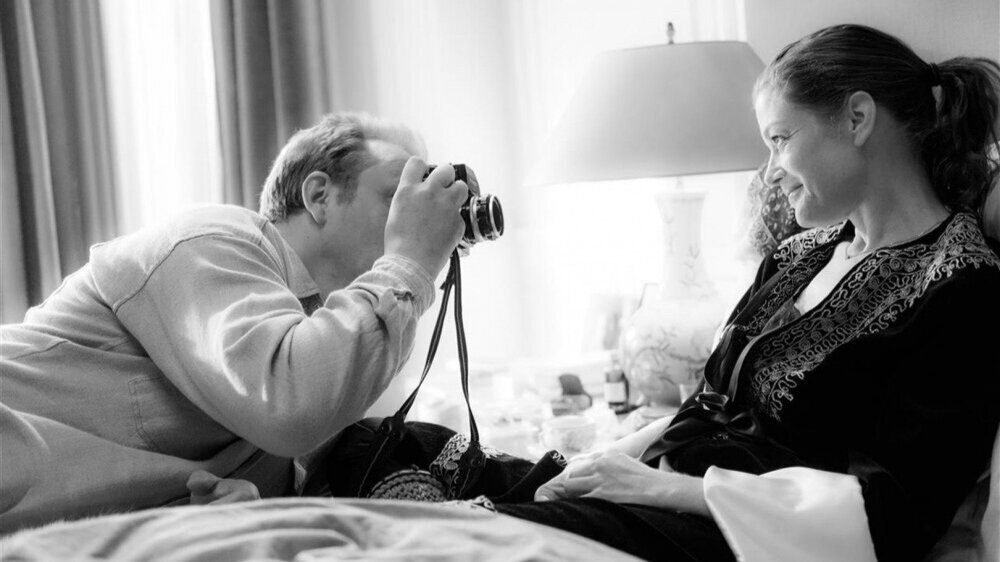3 Days in Quiberon
Romy Schneider is put under the spotlight in a dramatic reconstruction.
We have here a film which for half of its length is impressive but which by its close has been undermined by doubts that eventually come to the surface. Its subject is an actual interview that took place in 1981 when a journalist from Stern magazine, Michael Jürgs (Robert Gwisdek), and a photographer, Robert Lebeck (Charly Hübner), came to Quiberon in Brittany where the actress Romy Schneider (Marie Bäumer), staying in a spa there, had agreed to meet them. A life-long friend of Schneider, Hilde Fritsch (Birgit Minichmayr), was visiting her at the time and quickly took the view that Jürgs was manipulative and seeking to hone in on Schneider’s troubled private life. By that time, she had separated from her second husband and was aware that her son from her first marriage, whose father had killed himself, had become distant from her.
3 Days in Quiberon was written and directed by a female filmmaker, Emily Atef, and to start with the film works well. Although shot in the ’Scope format, it has an intimate feel encouraged perhaps by the decision to film it in black and white. Bäumer, with a strong resemblance to Romy Schneider, acts the role admirably and Minichmayr is equally good as Hilde – Atef brings out their close bond most persuasively while the interview scenes achieve their own impact. An early reference to insensitive journalists intent on getting a good story describes their methods as akin to verbal rape and we are impliedly invited to see this particular interview as an example of it. Indeed, Hilde becomes critical of her friend’s willingness to submit to it, an attitude on Schneider’s part born quite possibly of a sense of guilt that drives her to expose the fact that she is an unhappy woman despite being the most popular European film actress of the era.
So far, so good. But the fact is that 3 Days in Quiberon lasts for almost two hours and, once the interview has been concluded, it comes to feel overextended. It meanders on without being altogether persuasive when it unexpectedly attempts to paint the journalists in a different light (the film’s credits indicate that inspiration came from conversations with Jürgs and Lebeck). At this stage, we have more and more time to ponder to what extent this portrait of Schneider is itself playing up her sufferings in a way somewhat comparable to that of intrusive journalists. In this respect it is not irrelevant to mention that Schneider’s daughter has taken the film to task for suggesting that her mother was an alcoholic and Atef appears to have acknowledged in a general way that her film has made play with some of the realities of the situation (that of course is quite common in films based on actual events). It seems odd too that the film adds a coda set in Paris a week later and seeks to end on an upbeat note. That is strange because the kind of written statement usually found at the end of a movie based on real life has appeared up front here and it has informed us of the tragic accidental death of Romy Schneider’s son and her own subsequent death in 1982 which is described as ‘unresolved’. All told then, there is a lot to admire here, but perhaps ultimately even more to query.
MANSEL STIMPSON
Cast: Marie Bäumer, Birgit Minichmayr, Charly Hübner, Robert Gwisdek, Denis Lavant, Vicky Krieps, Christopher Buchholz, Jean-Louis Coulloc’h.
Dir Emily Atef, Pro Karsten Stöter, Screenplay Emily Atef, based on an idea by Denis Poncet, Ph Thomas W. Kiennast, Pro Des Silke Fischer, Ed Hansgörg Weissbrich, Music Christoph M.Kaiser and Julian Maas, Costumes Janina Audick.
Rohfilm Factory/Dor Film/Sophie Dulac Productions/Tita B Productions/Departures Film/ARTE-Modern Films.
116 mins. Germany/Austria/France. 2018. Rel: 16 November 2018. Cert. 12A.


